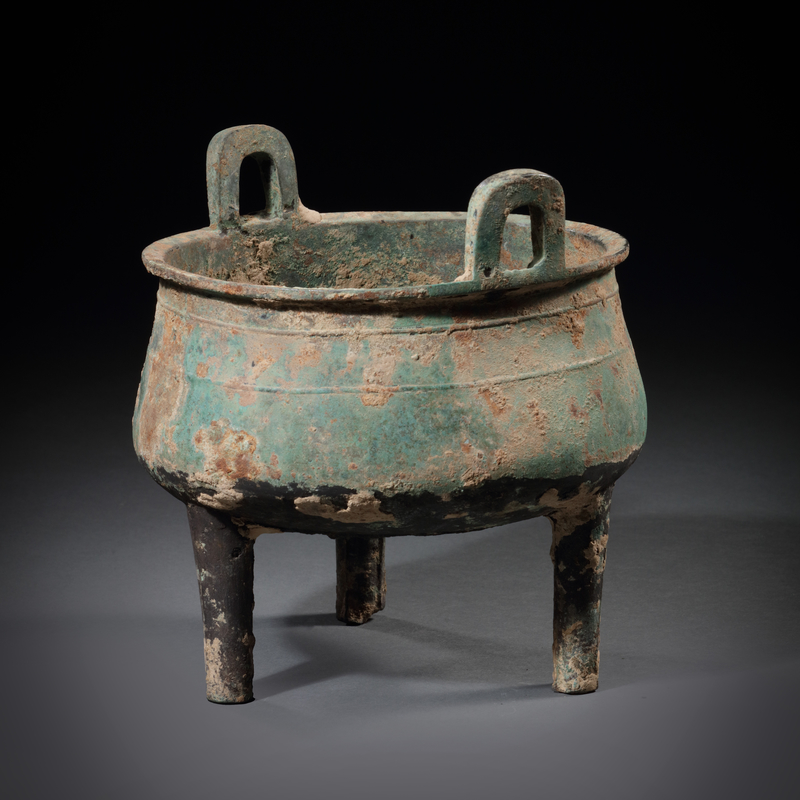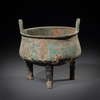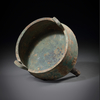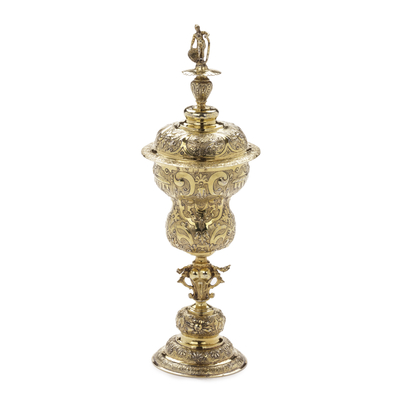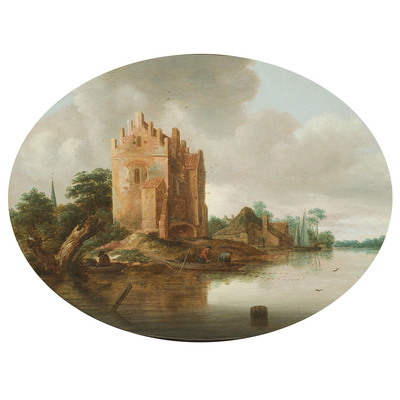Ritual food vessel, Ding
Global shipping available
- Origin
- China
- Period
- Western Zhou Dynasty, 1046 - 771 BC
- Material
- Bronze
- Height
- 21 cm
Questions about this object?
Please use one of the contact options below:
Description
This bronze ding is raised on three slightly tapering legs. The swelling body is finely cast with two ridges below the everted rim cast with a pair of upright loop handles. The ding has a pale green patina and patches of malachite encrustation.
The bronze ding, a cooking utensil in remote times, was used like a cauldron for boiling fish and meat. At first, around 5,000 to 6,000 years ago, the ding was made of fired clay, usually with three legs. With the advent of the slavery system, China entered the bronze age, and the earthen ding was gradually replaced by the bronze one. In time, it assumed the role of an important sacrificial vessel. Towards the end of the slave society, the ding became a vessel which, by its size and numbers indicated the power and status of the aristocrat owner. At rites the emperor used a series of 9 ding, the dukes and barons 7, senior officials 5, and scholarly gentlemen 3. From the number of ding yielded by an ancient tomb, one can tell the status of its dead occupant.
